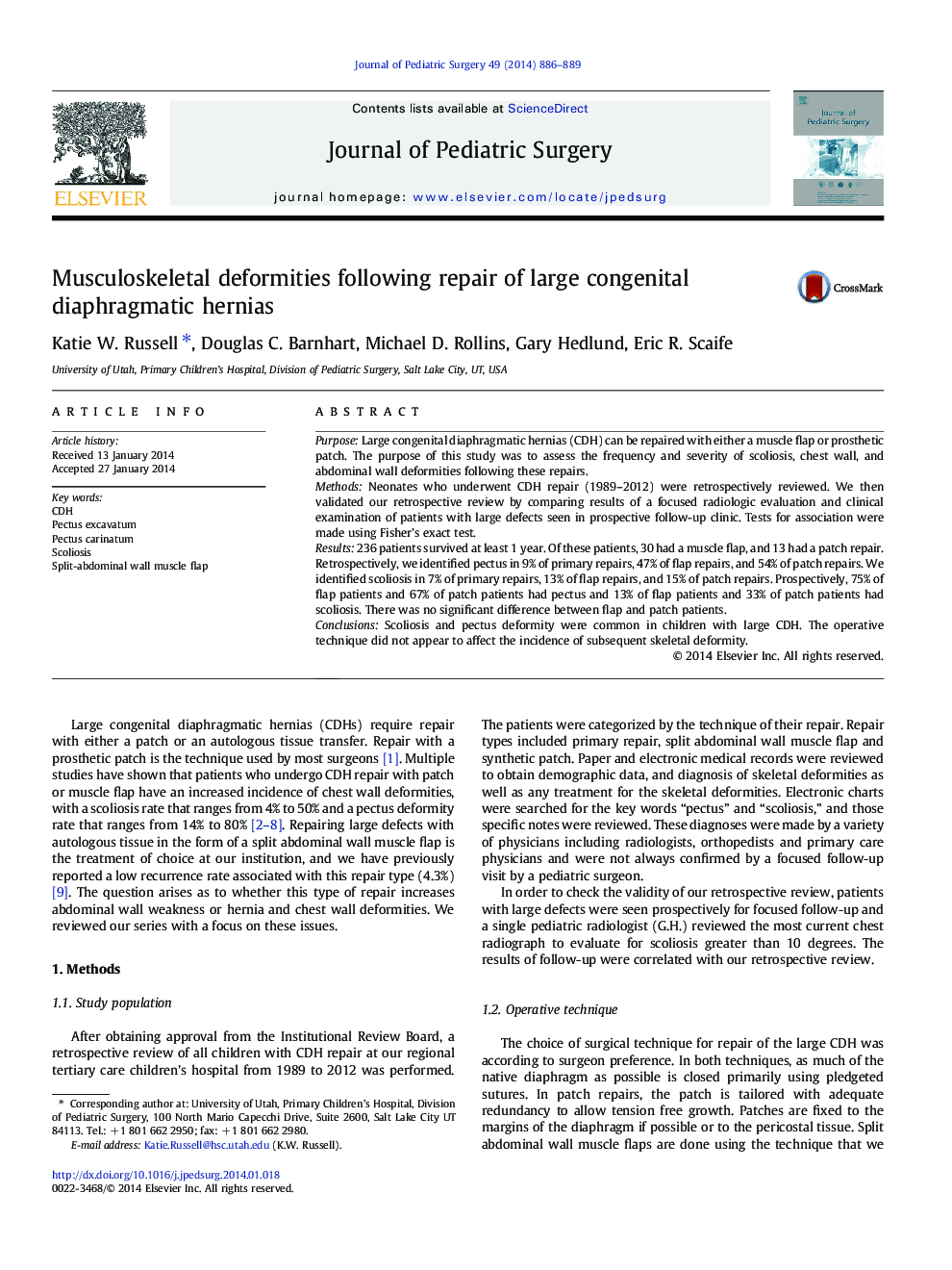| کد مقاله | کد نشریه | سال انتشار | مقاله انگلیسی | نسخه تمام متن |
|---|---|---|---|---|
| 6217338 | 1273761 | 2014 | 4 صفحه PDF | دانلود رایگان |
PurposeLarge congenital diaphragmatic hernias (CDH) can be repaired with either a muscle flap or prosthetic patch. The purpose of this study was to assess the frequency and severity of scoliosis, chest wall, and abdominal wall deformities following these repairs.MethodsNeonates who underwent CDH repair (1989-2012) were retrospectively reviewed. We then validated our retrospective review by comparing results of a focused radiologic evaluation and clinical examination of patients with large defects seen in prospective follow-up clinic. Tests for association were made using Fisher's exact test.Results236 patients survived at least 1Â year. Of these patients, 30 had a muscle flap, and 13 had a patch repair. Retrospectively, we identified pectus in 9% of primary repairs, 47% of flap repairs, and 54% of patch repairs. We identified scoliosis in 7% of primary repairs, 13% of flap repairs, and 15% of patch repairs. Prospectively, 75% of flap patients and 67% of patch patients had pectus and 13% of flap patients and 33% of patch patients had scoliosis. There was no significant difference between flap and patch patients.ConclusionsScoliosis and pectus deformity were common in children with large CDH. The operative technique did not appear to affect the incidence of subsequent skeletal deformity.
Journal: Journal of Pediatric Surgery - Volume 49, Issue 6, June 2014, Pages 886-889
